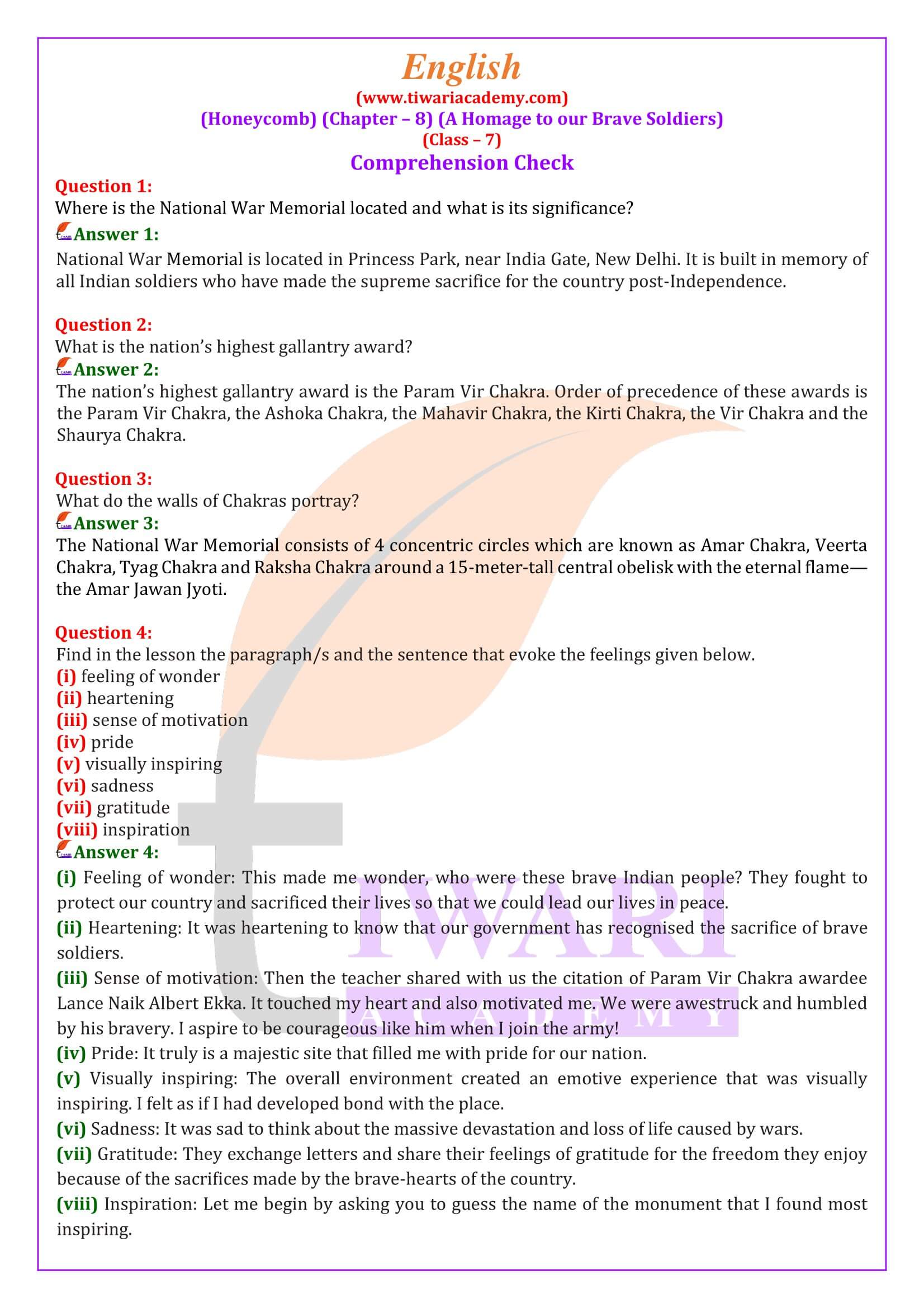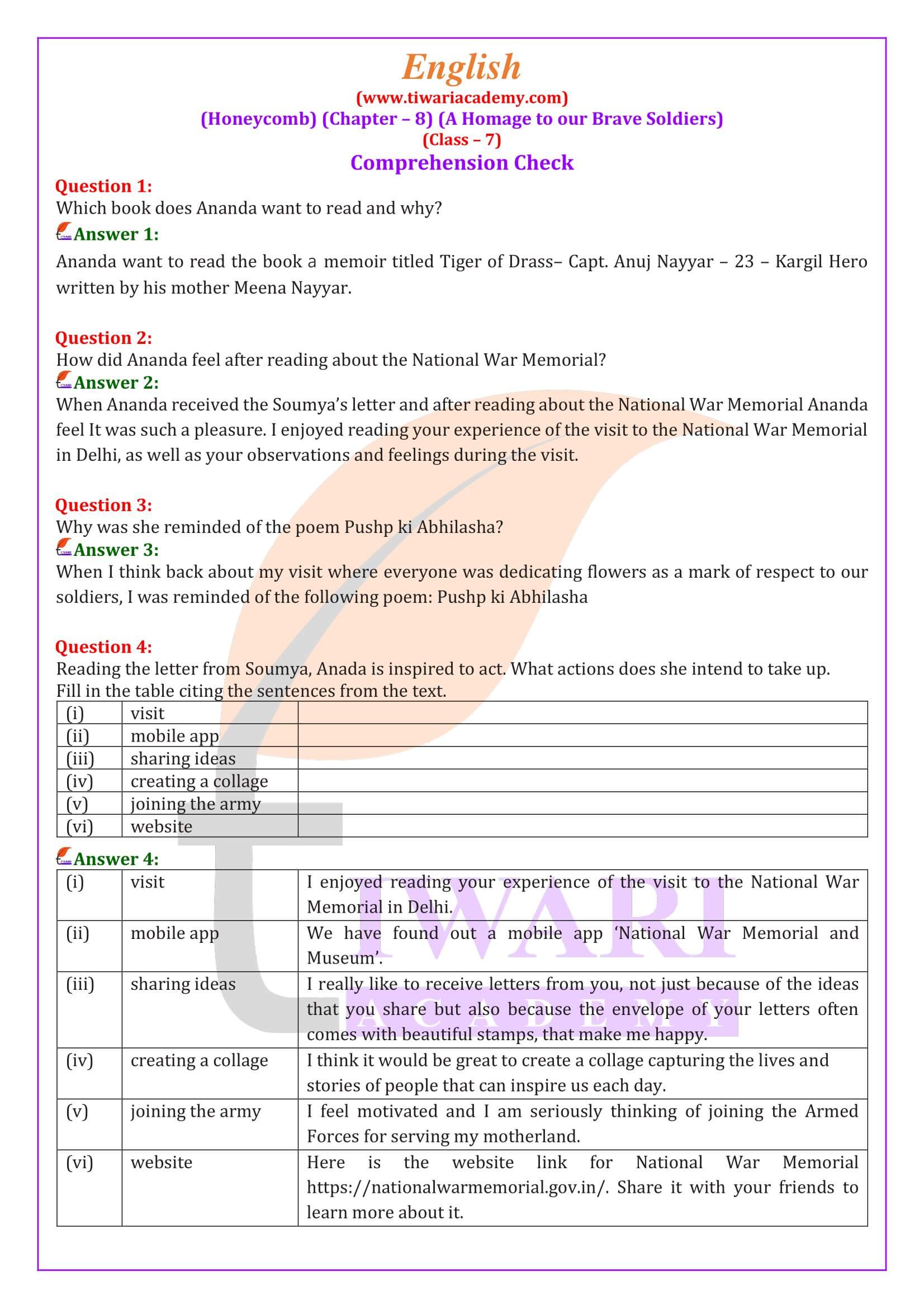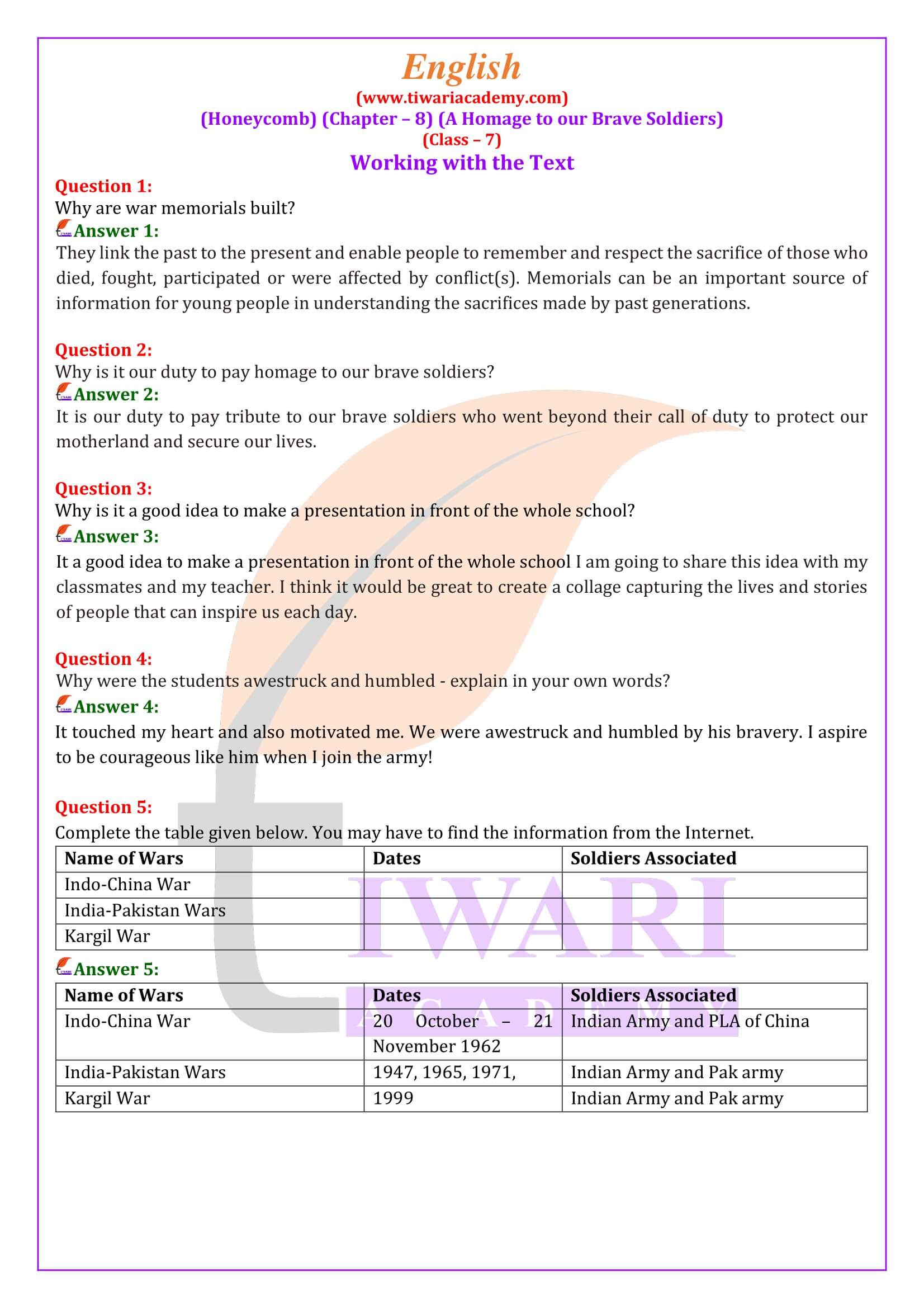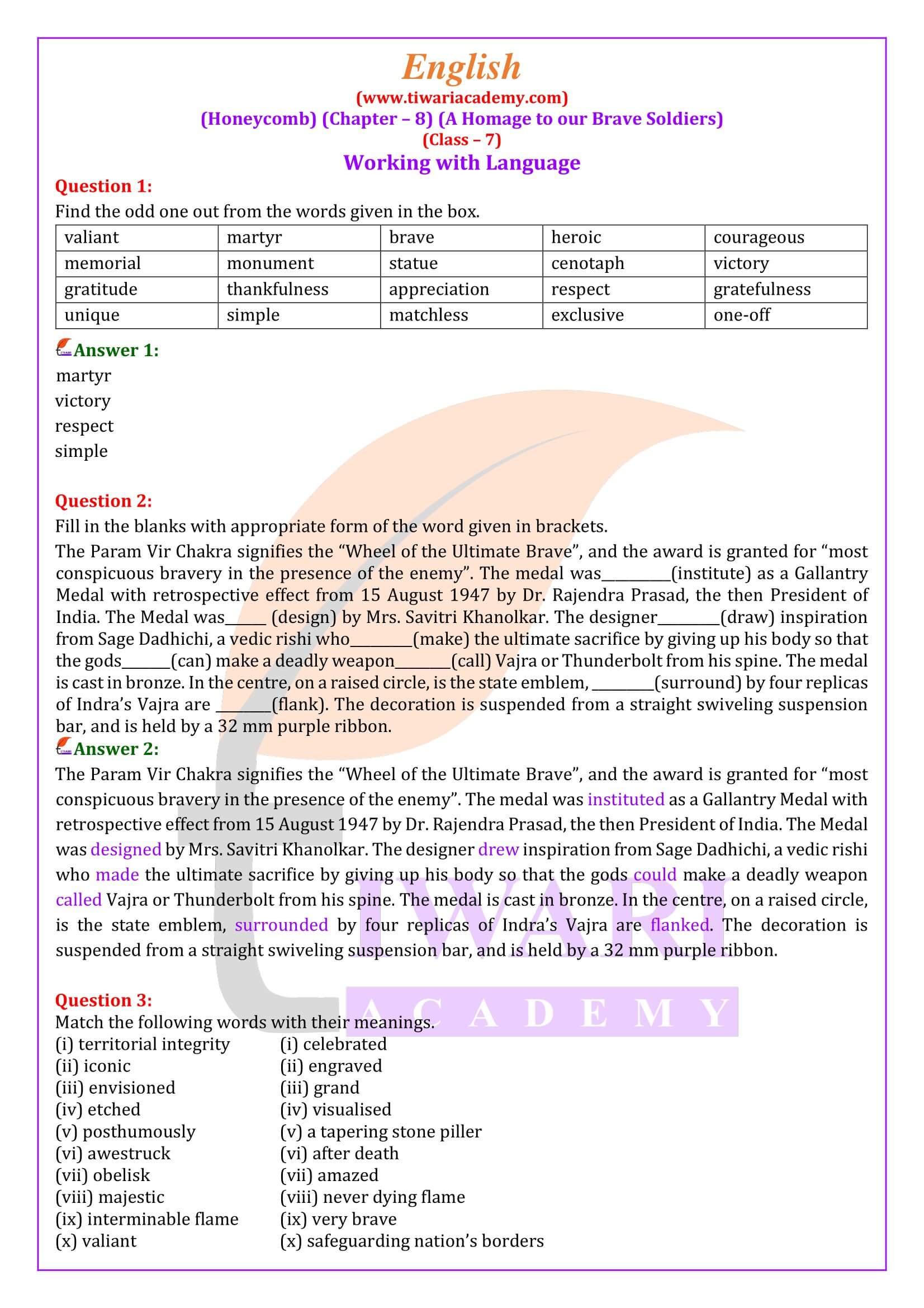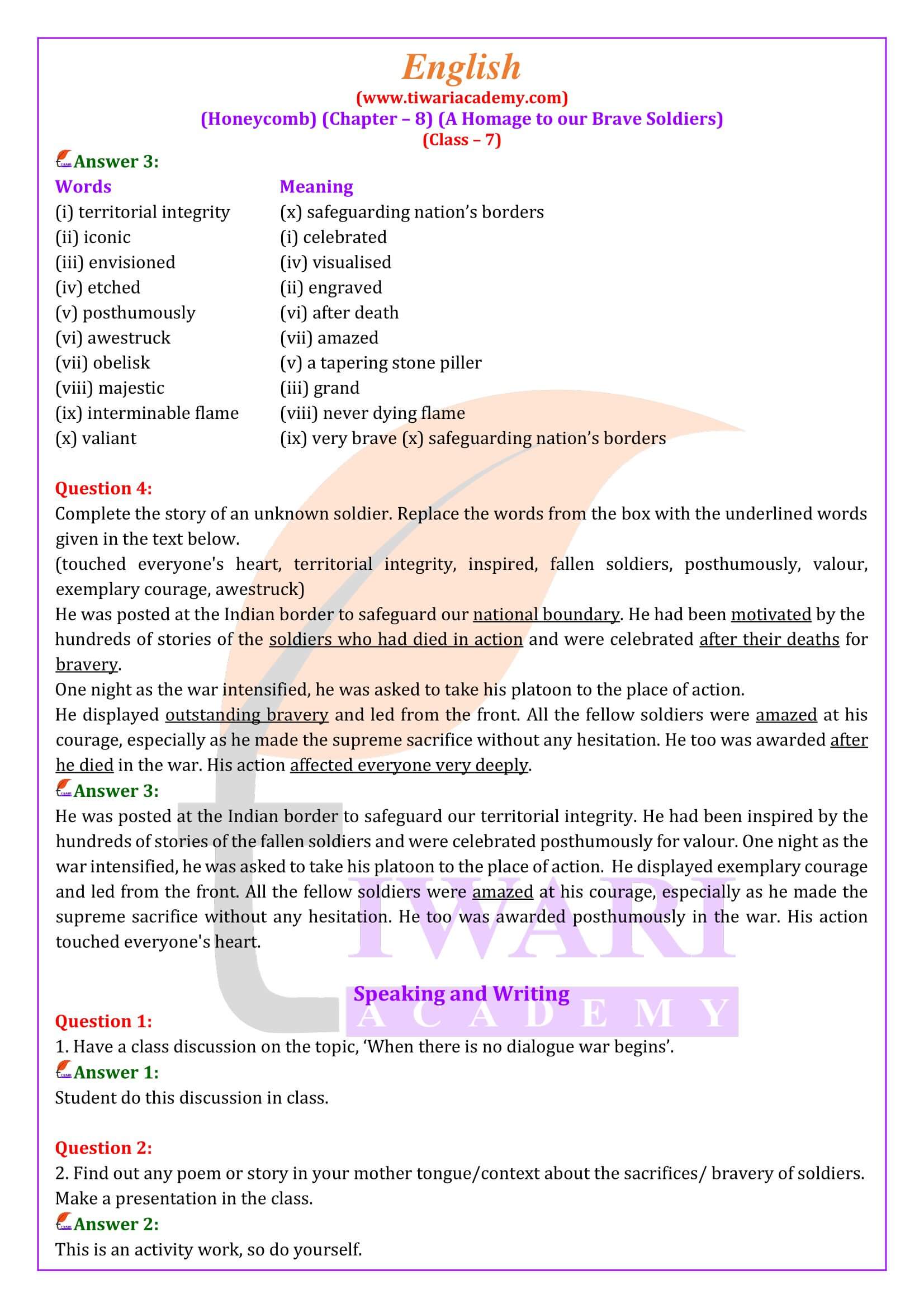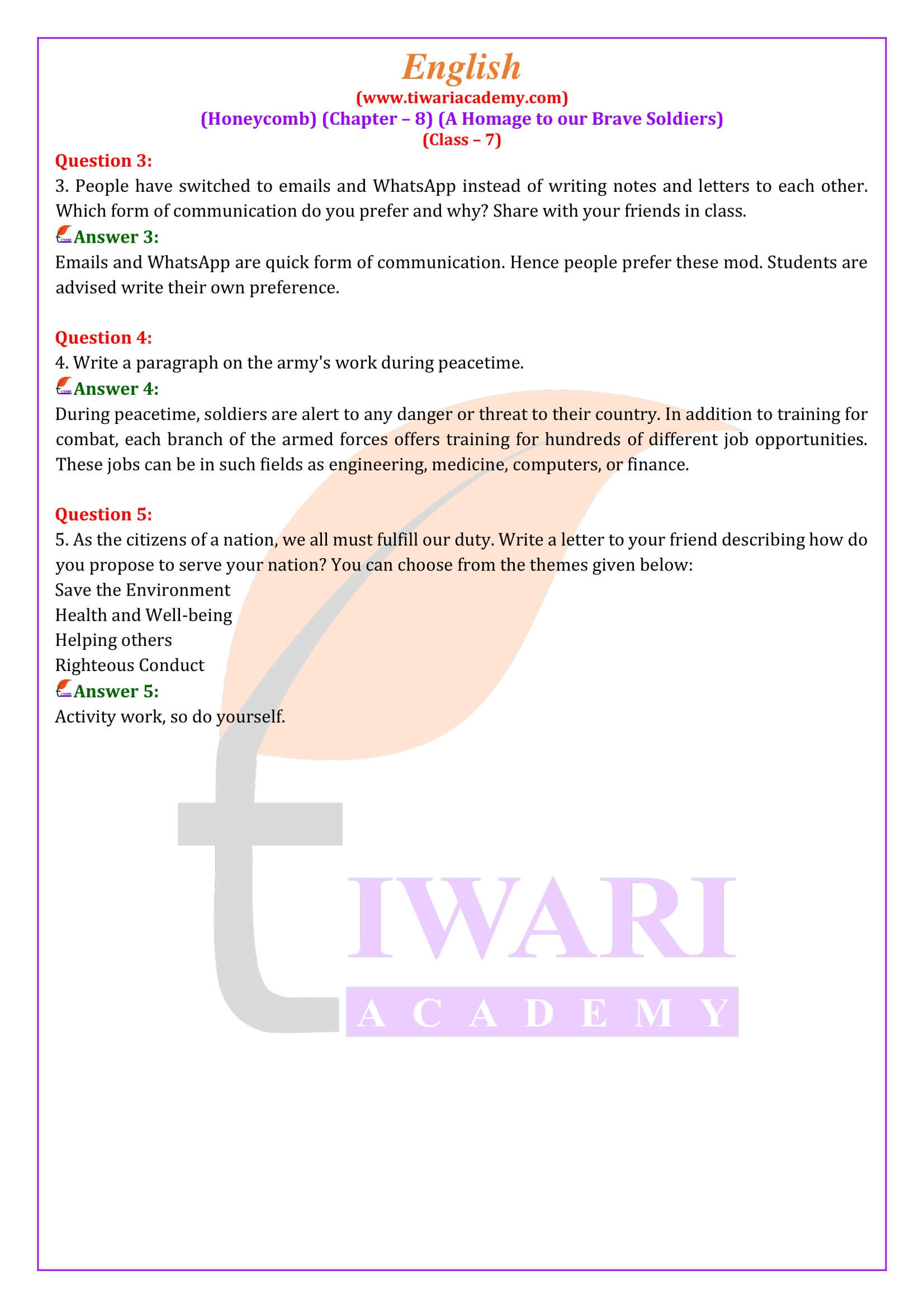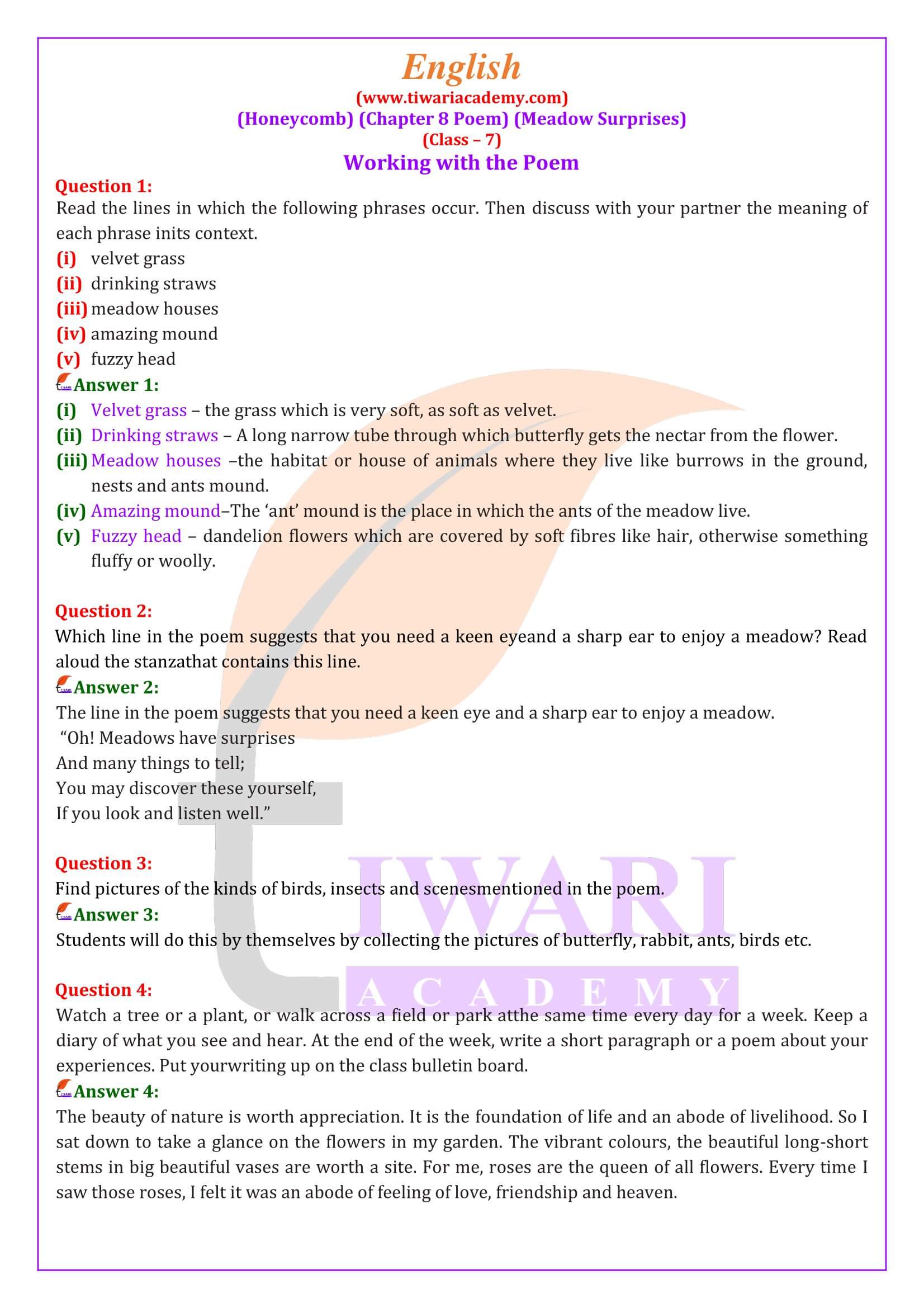NCERT Solutions for Class 7 English Honeycomb Chapter 8 A Homage to our Brave Soldiers with Poem 8 Meadow Surprises with Hindi Translation, Summary in Hindi and English for updated for new academic session 2025-26. Class 7th English Chapter 8 solutions includes comprehension check, working with the text, working with language, speaking & writing skills and all other questions based on new NCERT books published for 2025-26 exams.
NCERT Solutions for Class 7 English Honeycomb Chapter 8
| Class: 7 | English |
| Textbook: | English Reader – Honeycomb |
| Chapter 8: | A Homage to our Brave Soldiers |
| Content: | NCERT Solutions and Extra Questions |
| Academic Session: | 2025-26 |
7 English Honeycomb Chapter 8 Question – Answers
Question – Answers of Class 7 English Reader book – Honeycomb Chapter 8 A Homage to our Brave Soldiers & Poem 8 Meadow Surprises are given below to download free. NCERT Solutions and Offline Apps are available in updated form for new academic session 2025-26.
Class 7 English Chapter 8 Comprehensive Passage 1
Let me begin by asking you to guess the name of the monument that I found most inspiring. Let’s see if you can guess? The construction of this monument started in April 2018 and was completed in February 2019. It was envisioned and then inaugurated by India’s Prime Minister Shri Narendra Modi in February 2019. In terms of location and size, it is spread over 40 acres of land near the iconic India Gate. But more importantly, it is a tribute to some of the bravest Indians. I’m sure you’ve guessed! It’s the ‘National War Memorial’. Won’t you say, a long desired aspiration was fulfilled?
Answer the following Questions:
1. Where is our National War Memorial situated?
2. On which date the construction of National War Memorial started?
3. When was National War Memorial India inaugurated?
Class 7 English Chapter 8 Comprehensive Passage 2
The innermost circle represents the Amar Chakra, also known as the ‘Circle of Immortality’. This has the Obelisk with Eternal Flame. The Amar Jawan Jyoti flame symbolises the immortality of the spirit of fallen soldiers with the assurance that the nation will never forget their sacrifice. The second circle is called the Veerta Chakra which is also known as the ‘Circle of Bravery’. There is a covered gallery that exhibits six murals crafted in bronze depicting valiant battle actions of our Armed Forces. The third circle represents the Tyag Chakra, also known as the ‘Circle of Sacrifice’. The circular concentric walls of honour symbolise the ancient war formation which is called Chakravyuh. The walls are covered with granite tablets and individual tablet is solely dedicated to each fallen hero of post-Independent India. Their names are etched in golden letters.
Answer the Following Questions:
1. What do the three concentric circles mean?
2. What is the innermost circle of National War Memorial Called?
3. What is the circular concentric walls of National War Memorial Called?
Class 7 English Chapter 8 Comprehensive Passage 3
I hope you like the poem. I must say, I was inspired by your idea of presenting the valourous stories of India’s soldiers. There are so many stories of courage, bravery, and sacrifice which remind us that many of the challenges we face in our lives are inconsequential. We can enjoy peace in our country and the luxury of exchanging ideas with our friends because our Armed Forces are alert and work hard to create that environment for us. Very recently I read in the newspaper that Captain Anuj Nayyar, MVC, an Indian Army officer of the 17 Jat regiment was posthumously awarded the Maha Vir Chakra, India’s second highest gallantry award, for exemplary valour during the Kargil War in 1999. I look forward to learning more about him. Meanwhile, I learnt that his mother Meena Nayyar has written a memoir titled Tiger of Drass– Capt. Anuj Nayyar – 23 – Kargil Hero which I shall certainly go through. I am sharing with you an excerpt of her interview with IANS.
Answer the following questions:
1. Which ideas were inspired the Ananda?
2. Who was Captain Anuj Nayyar?
3. Who gave the title of ‘Tiger of Drass’ to Captain Anuj Nayyar?
Suggested Answers to Comprehensive Passages
Suggested Answers to Comprehensive Passages I:
1. The monument is located east of the India Gate around the Canopy at ‘C’ Hexagon in New Delhi.
2. The construction of this monument started in April 2018 and was completed in February 2019.
3. National War Memorial monument was dedicated to the Armed Forces on behalf of the nation by the Prime Minister Narendra Modi on 25 February 2019.
Suggested Answers to Comprehensive Passages II:
1. The three concentric Circles Model represents the spread of the English language in terms of three concentric circles: The inner circle, the outer circle and the expanding circle.
2. The innermost circle represents the Amar Chakra, also known as the ‘Circle of Immortality’. This has the Obelisk with Eternal Flame.
3. The circular concentric walls of honour symbolise the ancient war formation which is called Chakravyuh. The walls are covered with granite tablets and individual tablet is solely dedicated to each fallen hero of post-Independent India. Their names are etched in golden letters.
Suggested Answers to Comprehensive Passages III:
1. I was inspired by your idea of presenting the valourous stories of India’s soldiers. There are so many stories of courage, bravery, and sacrifice which remind us that many of the challenges we face in our lives are inconsequential.
2. Captain Anuj Nayyar, MVC, an Indian Army officer of the 17 Jat regiment was posthumously awarded the Maha Vir Chakra, India’s second highest gallantry award, for exemplary valour during the Kargil War in 1999.
3. His mother Meena Nayyar has written a memoir titled Tiger of Drass– Capt. Anuj Nayyar – 23 – Kargil Hero. The Tiger of Drass is one such book authored by Meena Nayyar and Himmat Singh Shekawat.
